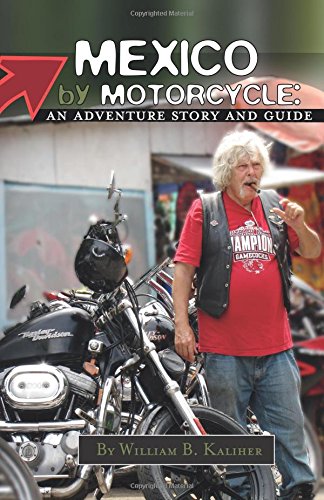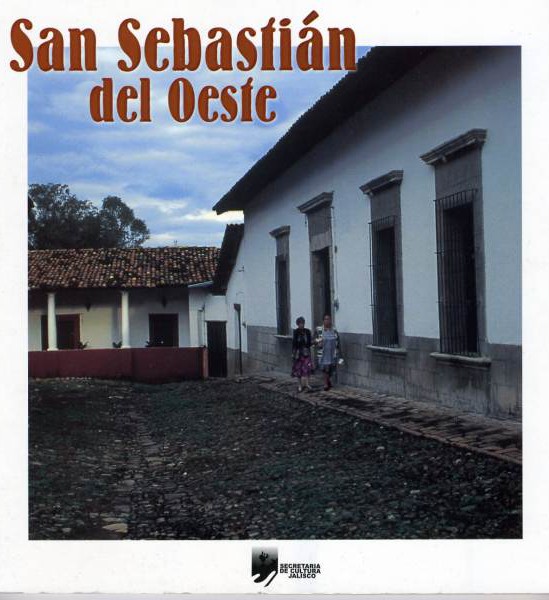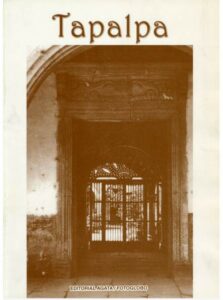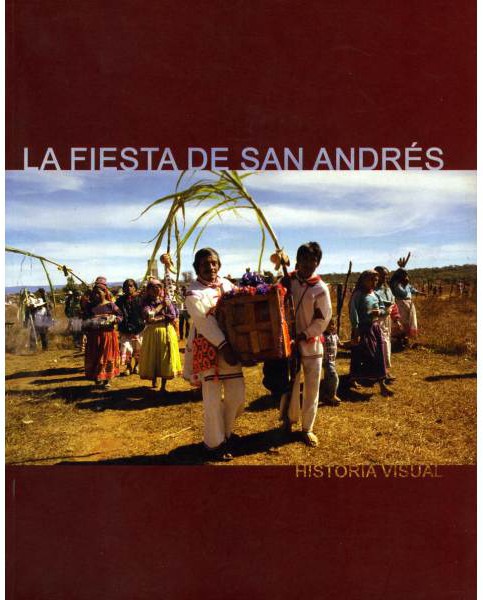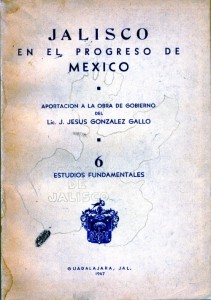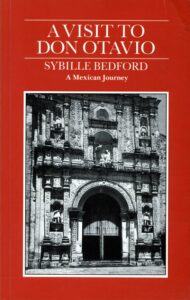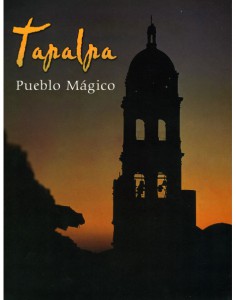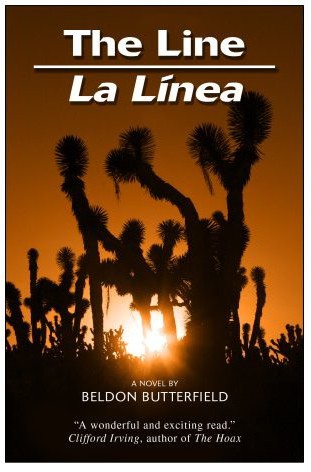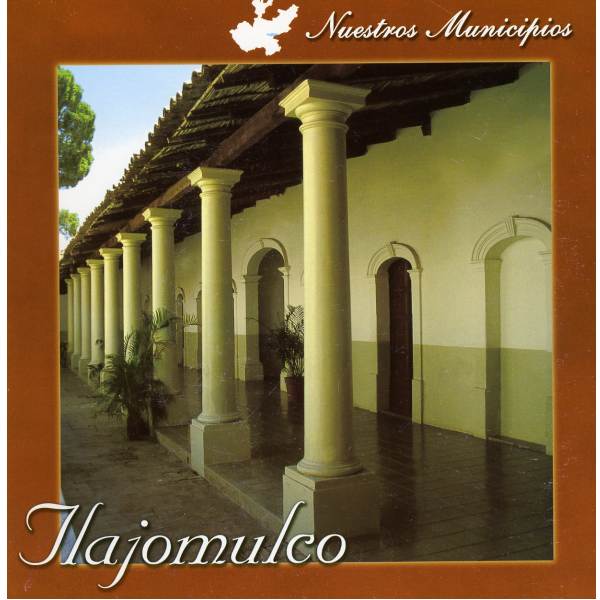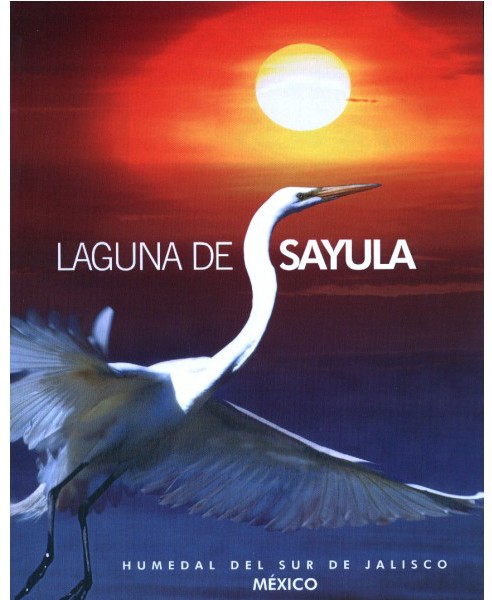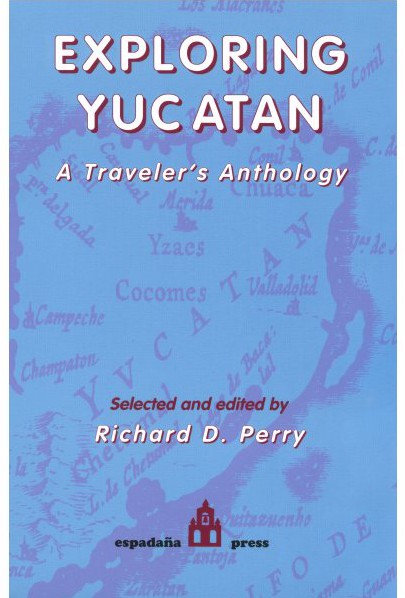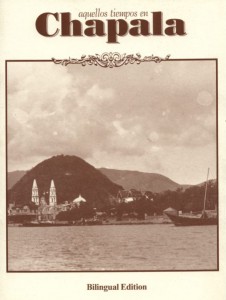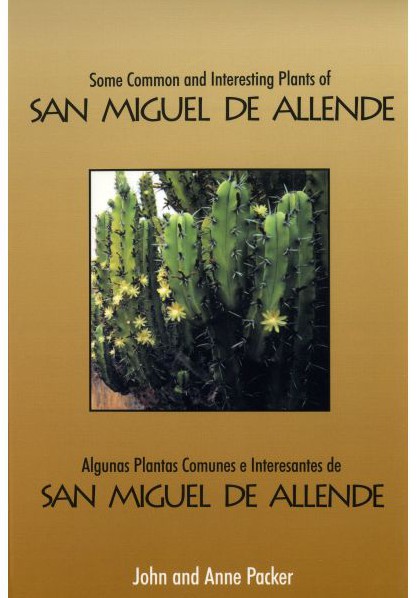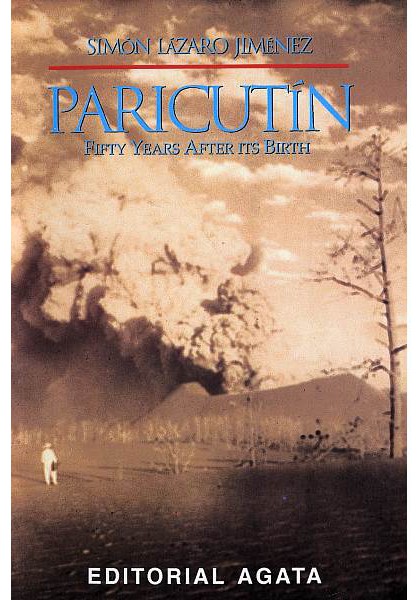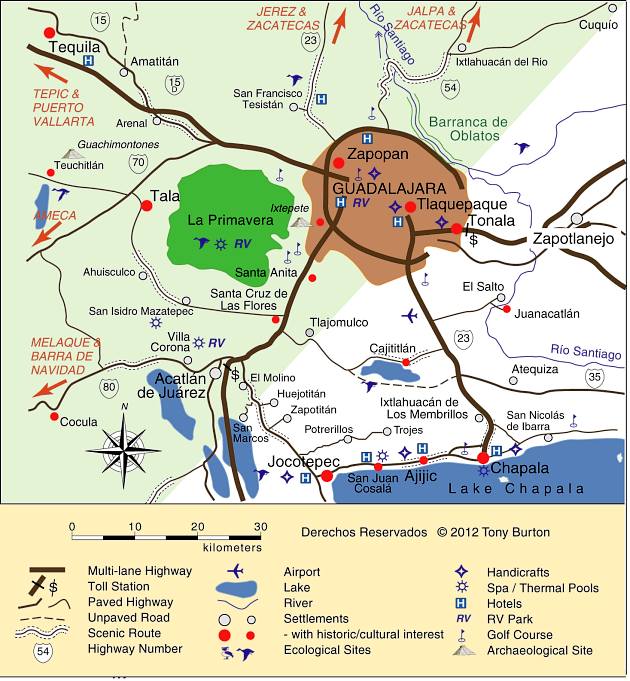A Drink Named Tequila by José María Muria and Ricardo Sánchez (Ed.Agata, 1996).
Softcover, 81 pages. Dimensions (in inches): 8.6 x 8.6 x 0.3. ISBN 968-7310-79-0 Price: US$15.00 (plus shipping, contact us for details)
All genuine tequila comes (by law) from within a limited region of Western Mexico, centered on the small town of Tequila, an hour’s drive west of Guadalajara.
 Beautifully illustrated with 32 color plates, A Drink Named Tequila traces the history and mystery of tequila (the liquor) from its ancient roots to today. The text, by one of Jalisco’s foremost historians, José María Muria, provides many fascinating insights into Mexico’s national drink.
Beautifully illustrated with 32 color plates, A Drink Named Tequila traces the history and mystery of tequila (the liquor) from its ancient roots to today. The text, by one of Jalisco’s foremost historians, José María Muria, provides many fascinating insights into Mexico’s national drink.
For example, did you know what the agave (maguey) plant, from which tequila is derived, represented in the ancient Nahuatl culture? “In the Nahuatl culture, the maguey was a divine creation that represented Mayáhuel, a goddess who had four hundred breasts to feed her four hundred children.”
For a long time, the production of liquor of any kind was completely prohibited in New Spain:
“With the intention of favoring the importation and sale of produce from the major Iberian peninsular landowners, the Spanish Crown had prohibited the production of liquor in America, and brutally persecuted those who disobeyed. This, as well as to ensure – at least, so they said – that the Indians and mestizos would consume less, was why mescal was born and raised clandestinely. In turn, this explains why it took so long to leave clear proof of its existence and why today we know so little of its teething stages and first, tottering steps.”
Many of the early tequila brands were given feminine names:
“It became common for distilleries to be baptized with a feminine variant of the surname of their owner; Martinez: “La Martineña”; Guarro: “La Guarreña; Gallardo: “La Gallardeña”; Flores: “La Floreña”; Quintanar: “La Quintaneña”, etcetera. It also became common to link the brand name with some positive quality, as in the case of … “La Perseverancia” (“The Perseverance”), or… “La Constancia” (“The Certainty”).”
Of interest to historians looking at the migration of rural businessmen from the site of their wealth in the countryside toward the cities, Muria writes that,
“Of all the great rural businessmen, the tequila producers were the last to move their places of residence from the countryside. As the twentieth century began, it is well known that practically all the hacienda owners had relegated their ancestral residences to the role of summer homes or for occasional visits, given that now their greatest desire was to figure prominently in the loftiest circles of society in Mexico’s provincial capitals, the capital of the Republic, or even in Paris or some other flashy European city.”
The book does have a handful of minor flaws. For example, Muria writes that the cocktail known as a margarita is made from “a combination of tequila with a dash of lime juice, mint and salt”. Perhaps he wrote this phrase after tasting one too many tequilas, since for a genuine margarita, his “mint” would need to be replaced by a shot of orange-flavored liqueur such as cointreau or Gran Marnier…
Despite such minor details, A Drink Named Tequila (Editorial Agara, 1996) remains a fascinating and well-illustrated read.
Want to learn more about tequila?

